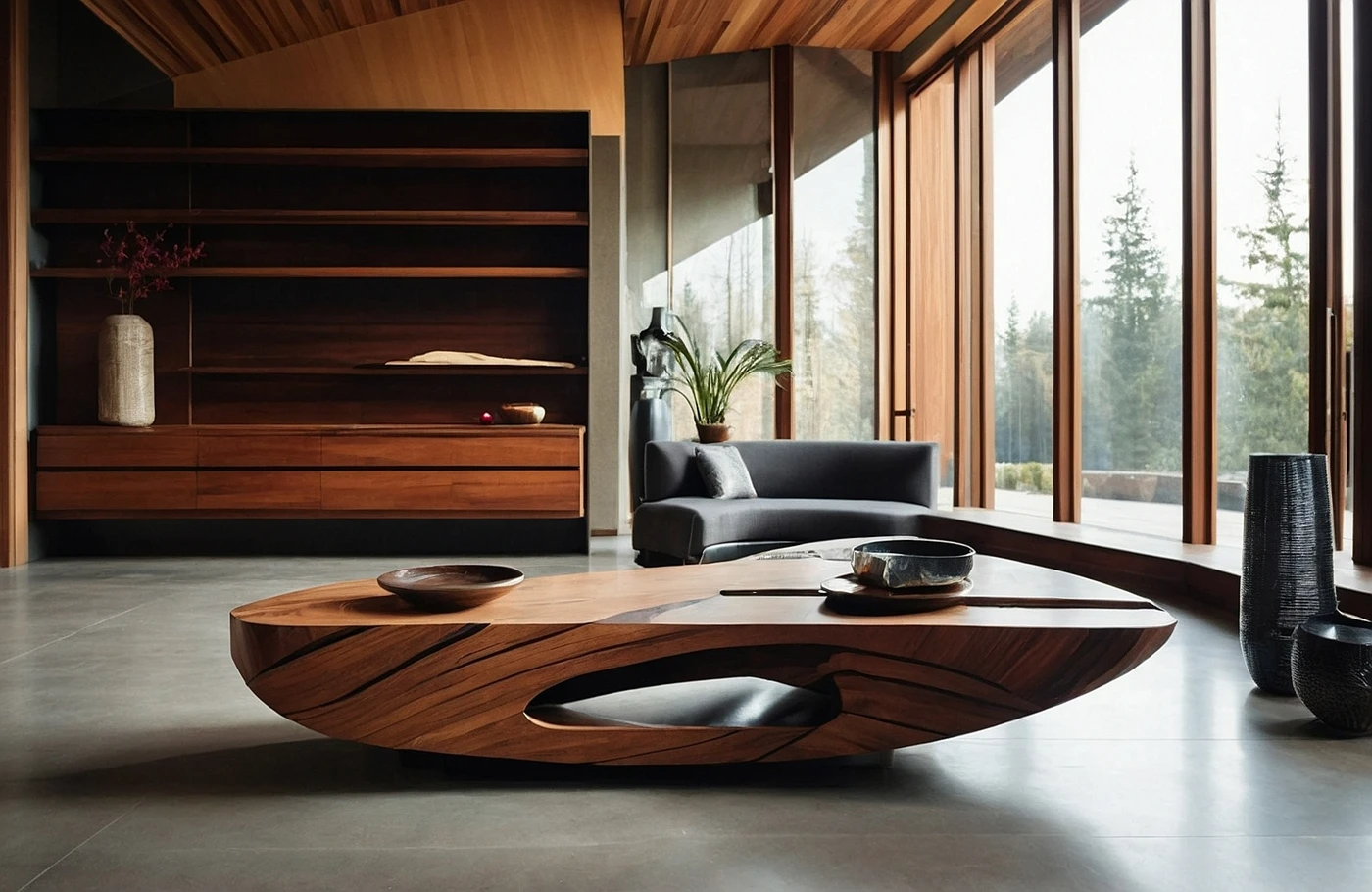240 Volt 20 Amp Plug Wiring Diagram

Decoding the 240 Volt 20 Amp Plug Wiring Diagram
Understanding the 240V 20A Plug Wiring Diagram
The 240V 20A plug is a crucial component in powering various high-voltage electrical devices and appliances. Understanding the wiring diagram for this type of plug is essential for ensuring proper and safe installation. In this article, we'll dive deep into the intricacies of the 240V 20A plug wiring diagram, exploring its components, color-coding, and best practices for safe installation.
The Anatomy of a 240V 20A Plug
A 240V 20A plug typically features three main components: two hot wires, one neutral wire, and a ground wire. The hot wires carry the electrical current, while the neutral wire serves as the return path. The ground wire provides a safety mechanism, ensuring that any electrical faults are directed away from the user.
Color-Coding and Wire Identification
Proper wire identification is crucial when working with 240V 20A plugs. In the United States, the hot wires are typically black and red, the neutral wire is white, and the ground wire is green or bare copper. It's essential to follow these color-coding conventions to ensure the safe and correct installation of the plug.
Understanding the Wiring Diagram
The 240V 20A plug wiring diagram illustrates the correct way to connect the different wires. The diagram typically shows the plug from the back, with the three terminal screws or connections clearly labeled. By following the diagram, you can ensure that the hot, neutral, and ground wires are connected to the appropriate terminals.
Properly Grounding the Plug
Grounding the 240V 20A plug is a critical safety measure. The ground wire, usually green or bare copper, provides a path for any electrical faults to be directed away from the user, reducing the risk of electrical shock. Ensuring a proper ground connection is essential for the safe operation of the plug.
Important Considerations for Installation
When installing a 240V 20A plug, it's crucial to follow local electrical codes and regulations. This may include verifying the amperage rating of the circuit, ensuring the wiring is of the appropriate gauge, and using the correct type of cable or conduit. Consulting with a licensed electrician is recommended, especially for complex installations or if you're unsure about any aspect of the process.
Troubleshooting Common Issues
If you encounter any issues with your 240V 20A plug, such as a lack of power or tripping breakers, it's important to address the problem promptly. Common issues may include incorrect wiring, loose connections, or overloaded circuits. Troubleshooting these problems requires a thorough understanding of the wiring diagram and electrical safety practices.
The 240V 20A plug wiring diagram is a crucial tool for understanding and properly installing high-voltage electrical equipment. By familiarizing yourself with the components, color-coding, and best practices for safe installation, you can ensure the reliable and safe operation of your 240V 20A plug. Remember to always prioritize safety and consult with a licensed electrician if you're unsure about any aspect of the installation or maintenance process.
Mastering the Electrical Circuit: Understanding the 240V 20A Setup
Demystifying the 240V 20A Electrical Setup
Navigating the intricate world of electrical wiring can be a daunting task, especially when it comes to the 240V 20A setup. This type of electrical configuration is commonly found in various applications, from large appliances to workshops and industrial facilities. Understanding the underlying principles and proper wiring techniques is crucial for ensuring the safety and efficiency of your electrical system. In this comprehensive guide, we will delve into the world of 240V 20A wiring, uncovering the essential details you need to master this essential electrical setup.
The Basics of 240V 20A Circuits
The 240V 20A electrical circuit is a crucial component of many modern electrical systems. It operates at a higher voltage than the standard 120V household circuits, providing a more efficient and powerful supply of electricity. This higher voltage is particularly beneficial for powering heavy-duty equipment, such as HVAC systems, welding machines, and large appliances, where increased power is required.
At the heart of the 240V 20A setup are two 120V hot wires, which together create the 240V potential difference. These hot wires are accompanied by a neutral wire and a ground wire, each serving a specific purpose in the circuit. Understanding the role and proper connection of these individual components is essential for ensuring a safe and functional electrical system.
Wiring the 240V 20A Plug
The wiring of a 240V 20A plug is a precise process that requires attention to detail. The hot wires, neutral wire, and ground wire must be carefully connected to the appropriate terminals within the plug housing. It's important to note that the hot wires are typically labeled as "L1" and "L2," while the neutral wire is labeled as "N," and the ground wire is labeled as "G" or "GND."
To ensure the proper wiring of a 240V 20A plug, it's crucial to follow the manufacturer's instructions and adhere to local electrical codes and regulations. Improper wiring can lead to dangerous consequences, such as electric shocks, fires, or even damage to the connected equipment.
Understanding the Importance of Grounding
Grounding is a fundamental aspect of any electrical system, and it plays a crucial role in the 240V 20A setup. The ground wire, which is typically green or bare copper, provides a path for any stray electrical current to safely return to the earth. This helps to prevent the buildup of dangerous voltages within the system, reducing the risk of electric shocks and other electrical hazards.
It's important to ensure that the ground wire is properly connected to a reliable grounding source, such as a metal grounding rod or a dedicated grounding terminal. Failure to establish a proper ground can compromise the safety of the electrical system and increase the risk of electrical accidents.
Troubleshooting and Safety Considerations
In the event of any issues or concerns with your 240V 20A electrical setup, it's essential to seek the guidance of a licensed electrician. Attempting to troubleshoot or repair the system without the proper knowledge and expertise can be extremely dangerous and may result in severe injuries or property damage.
Additionally, it's crucial to prioritize safety throughout the installation, maintenance, and usage of your 240V 20A electrical system. This includes wearing appropriate personal protective equipment (PPE), such as rubber gloves and insulated tools, and ensuring that the work area is well-lit and free of any potential hazards.
By understanding the principles of 240V 20A electrical wiring, you can ensure the safe and efficient operation of your electrical system, whether it's powering a large appliance, a workshop, or an industrial facility. Remember, diligence and attention to detail are key when working with high-voltage electrical systems to maintain the safety and integrity of your electrical infrastructure.
Dos and Don'ts: Proper Installation of a 240V 20A Plug
Mastering the Art of 240V 20A Plug Wiring: Dos and Don'ts
When it comes to electrical installations, proper wiring is crucial for safety and compliance. One critical aspect is the installation of a 240V 20A plug, which is commonly used for high-power appliances and equipment. Whether you're a DIY enthusiast or a professional electrician, understanding the dos and don'ts of this process can make all the difference. In this article, we'll dive deep into the best practices and potential pitfalls to ensure your 240V 20A plug installation is done right.
Understanding the Basics
A 240V 20A plug is designed to handle a significant amount of electrical current, making it essential to follow the appropriate safety protocols. This type of plug typically features a three-prong configuration, with a ground prong in the center and two hot prongs on the sides. It's important to note that the color-coding of the wires may vary depending on your local electrical codes, so always refer to the manufacturer's instructions or consult with a professional electrician.
Dos: Ensuring a Proper and Safe Installation
-
Disconnect the Power: Before you begin any work, make sure to disconnect the power supply to the circuit you'll be working on. This will prevent the risk of electrical shocks or accidental fires.
-
Use the Correct Wire Size: Ensure that you're using the appropriate wire size for your 240V 20A plug. In most cases, you'll need to use 12-gauge or 10-gauge wire, depending on the specific requirements of your installation.
-
Properly Strip the Wires: Carefully strip the insulation from the ends of the wires, exposing the correct amount of bare copper. This will allow for a secure and safe connection.
-
Connect the Wires Correctly: Ensure that the hot (or live) wires are connected to the appropriate terminals, and the ground wire is properly secured to the ground terminal. Refer to the manufacturer's instructions or consult an electrician if you're unsure.
-
Secure the Plug Firmly: Make sure the 240V 20A plug is securely mounted and held in place, either by using the appropriate mounting hardware or by connecting it directly to the circuit.
-
Test the Installation: After completing the wiring, use a voltage tester to ensure that the plug is functioning correctly and that the power is properly distributed to the appropriate terminals.
Don'ts: Avoiding Common Mistakes
-
Don't Overload the Circuit: Ensure that the 240V 20A plug is not being used to power more than its rated capacity. Overloading the circuit can lead to dangerous situations, such as electrical fires or equipment damage.
-
Don't Use Incorrect Wire Size: Using the wrong wire size can create a fire hazard and may not meet local electrical codes. Always refer to the manufacturer's recommendations or consult with a professional.
-
Don't Skip the Ground Connection: The ground wire is a crucial safety feature, as it provides a path for any electrical fault to be safely redirected. Never skip or bypass the ground connection.
-
Don't Make Loose Connections: Ensure that all wire connections are tight and secure to prevent the risk of arcing, which can lead to fires or other hazards.
-
Don't Ignore Local Electrical Codes: Familiarize yourself with the local electrical codes and regulations in your area, and make sure your 240V 20A plug installation complies with them.
By adhering to these dos and don'ts, you can ensure that your 240V 20A plug installation is safe, efficient, and compliant with industry standards. Remember, when it comes to electrical work, it's always better to err on the side of caution and consult with a professional electrician if you're unsure about any aspect of the process.
Troubleshooting Common Issues with 240 Volt 20 Amp Electrical Connections
Understanding 240V 20A Plug Wiring
Electrical systems in homes and buildings can be complex, and one of the most common connections is the 240V 20A plug. This type of plug is often used for high-powered appliances, such as electric ovens, dryers, and welding equipment. While these connections are generally reliable, there are times when issues may arise, and it's important to know how to troubleshoot them effectively.
Identifying Common 240V 20A Plug Problems
One of the most frequent problems with 240V 20A plugs is a loss of power or an inability to power the connected device. This can be caused by a variety of factors, including a tripped circuit breaker, a faulty plug or outlet, or even a problem with the wiring. In some cases, the issue may be related to the appliance itself, such as a malfunctioning heating element or motor.
Checking the Circuit Breaker
When experiencing a loss of power to a 240V 20A plug, the first step is to check the circuit breaker. This is the switch or fuse that controls the flow of electricity to the outlet. If the breaker has tripped, simply reset it by turning it off and then back on. If the breaker continues to trip, there may be an underlying electrical issue that needs to be addressed.
Inspecting the Plug and Outlet
Another potential issue with 240V 20A plugs is a problem with the plug or outlet itself. Over time, these components can become worn or damaged, leading to poor connections or even safety hazards. Carefully inspect the plug and outlet for signs of damage, such as cracked or melted plastic, loose connections, or signs of overheating.
Troubleshooting Wiring Problems
In some cases, the issue may be related to the wiring that connects the 240V 20A plug to the electrical panel. This could be due to a problem with the wiring itself, such as a loose connection or a break in the line, or an issue with the grounding system. If you suspect a wiring problem, it's best to have a qualified electrician inspect the system and make any necessary repairs.
Addressing Appliance-Related Issues
It's important to consider that the problem may be related to the appliance itself, rather than the electrical connection. This could be the case if the appliance is not receiving power, or if it is not functioning properly even when the plug is working correctly. In these situations, it may be necessary to have the appliance serviced or repaired by a qualified technician.
Maintaining 240V 20A Electrical Connections
To help prevent issues with 240V 20A plugs and outlets, it's important to regularly inspect and maintain the electrical system. This includes checking for signs of wear or damage, ensuring that all connections are tight and secure, and keeping the area around the plug and outlet clean and free of debris.
Troubleshooting problems with 240V 20A electrical connections can be a complex process, but understanding the common issues and following a systematic approach can help ensure the safe and reliable operation of high-powered appliances. By taking the time to properly inspect and maintain these connections, homeowners and building managers can help prevent costly repairs and potential safety hazards.
Safety Precautions: Ensuring a Secure 240V 20A Plug Wiring Process
Wiring the 240V 20A Plug: Prioritizing Safety and Precision
Properly wiring a 240V 20A plug is a critical task that requires meticulous attention to safety protocols. This type of electrical setup is commonly used for high-power appliances, and any missteps can lead to potentially dangerous consequences. In this article, we'll explore the essential steps to ensure a secure and compliant 240V 20A plug wiring process.
Understanding the Components
The 240V 20A plug typically consists of three main components: the hot wires (also known as "line" or "phase" wires), the neutral wire, and the ground wire. Identifying and correctly connecting these elements is crucial for safe operation.
Preparing the Work Area
Before beginning the wiring process, it's essential to prepare the work area. Ensure that the power supply is turned off and that the circuit breaker is in the "off" position. This step helps prevent accidental electrocution or damage to the equipment.
Disconnecting the Existing Plug
If you're replacing an existing 240V 20A plug, carefully disconnect the wires from the old plug, taking note of their positions. This will help you correctly wire the new plug and maintain the proper circuit configuration.
Identifying the Wires
Carefully examine the wires and identify their specific functions. The hot wires are typically black or red, the neutral wire is usually white, and the ground wire is typically green or bare copper. Ensure that you have the correct wire types and that they are in good condition before proceeding.
Connecting the Wires
Once you've identified the wires, it's time to connect them to the new plug. Secure the hot wires to the corresponding terminals, the neutral wire to the neutral terminal, and the ground wire to the ground terminal. Ensure that all connections are tight and secure.
Grounding the Plug
Proper grounding is crucial for the safety of the 240V 20A plug. The ground wire should be connected to the ground terminal on the plug and to a suitable grounding source, such as a metal electrical box or a grounding rod.
Testing and Inspection
After completing the wiring process, inspect the work to ensure that all connections are tight and that the plug is properly secured. Next, turn the power back on and test the plug to verify that it is functioning correctly. If any issues arise, immediately turn off the power and double-check your work.
Maintaining Safety Standards
Throughout the wiring process, it's essential to adhere to all relevant safety standards and local electrical codes. This may include wearing appropriate personal protective equipment (PPE), such as insulated gloves and safety glasses, and following any specific guidelines set by the manufacturer or your local authorities.
By following these steps and prioritizing safety, you can ensure a secure and compliant 240V 20A plug wiring process. Remember, electrical work should only be performed by qualified professionals, and if you're unsure about any aspect of the process, it's always best to consult with a licensed electrician.
Conclusion
Ensuring a Safe and Reliable 240 Volt 20 Amp Electrical Connection
The 240 volt 20 amp plug wiring diagram is a crucial tool for anyone working with high-power electrical systems. By understanding the intricacies of this setup, you can ensure the safe and efficient operation of your equipment, while avoiding costly and potentially dangerous issues. From mastering the underlying electrical circuit to properly installing the plug and troubleshooting any problems that may arise, this comprehensive guide has equipped you with the knowledge and skills necessary to tackle your 240V 20A electrical projects with confidence.
Throughout this article, we've explored the key aspects of the 240 volt 20 amp plug wiring diagram, equipping you with a deep understanding of how this system functions. By decoding the diagram, you've learned to identify the critical components and their roles, enabling you to make informed decisions and avoid costly mistakes during the installation and maintenance process.
Delving into the electrical circuit, we've emphasized the importance of mastering the 240V 20A setup, including the voltage, amperage, and the implications for your equipment and safety. This knowledge is vital, as it allows you to select the right components, ensure proper load balancing, and prevent overloads that could lead to fire hazards or equipment damage.
Of course, proper installation is paramount when working with high-power electrical systems. We've outlined the dos and don'ts of 240V 20A plug installation, covering everything from the necessary tools and techniques to the correct wiring procedures and safety protocols. By adhering to these guidelines, you can minimize the risk of mistakes and ensure a secure, long-lasting connection.
No discussion of 240 volt 20 amp electrical systems would be complete without addressing common troubleshooting scenarios. We've explored some of the most frequent issues that may arise, such as tripped circuit breakers, flickering lights, or unexpected equipment malfunctions. Armed with this knowledge, you'll be better equipped to diagnose and resolve these problems efficiently, reducing downtime and costly service calls.
Ultimately, the safety of you and your loved ones is the top priority when working with high-voltage electrical systems. That's why we've dedicated a section to emphasizing the critical safety precautions that must be taken throughout the 240V 20A plug wiring process. From proper personal protective equipment (PPE) to circuit isolation and testing procedures, these guidelines will help ensure that your electrical projects are completed without incident.
As you embark on your next 240 volt 20 amp electrical project, remember the key insights and strategies covered in this comprehensive guide. By mastering the wiring diagram, understanding the underlying circuit, following best practices for installation, troubleshooting effectively, and prioritizing safety, you'll be well on your way to achieving a safe, reliable, and code-compliant electrical setup. With this knowledge in hand, you can tackle your 240V 20A projects with confidence, knowing that you're equipped to handle any challenge that may arise.



